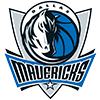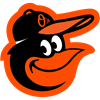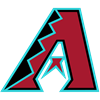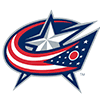Russell Westbrook
The All-Star guard is expected to be sidelined through the All-Star break after undergoing his third arthroscopic knee surgery on his right knee.
The problems began following a collision with Patrick Beverley in last year's playoffs. Westbrook suffered a torn lateral meniscus that needed surgery and cost him the remainder of the season. Doctors were able to perform a meniscus repair rather than removal, hoping it would help minimize any long-term effects. Unfortunately, the plan hit a minor snag as a suture from the repair caused swelling and a second surgery was needed. The latest surgery is the result of reoccurring swelling, though the Thunder has yet to specify the root of the problem. The possible options are numerous and include a Baker's Cyst or, worse, a cartilage defect.
A Baker's cyst develops when synovial fluid, the lubricating fluid of the joints, builds ups within the knee. These types of injuries can be present without pain but can be limiting as the cyst develops. Baker's cysts are common following meniscus procedures, but luckily, the long-term outlook is good once the cyst is removed and any additional contributing factors are treated. If this is the problem plaguing Westbrook then there's plenty of reason to believe he can continue to play at a high-level upon his return.
However, if a cartilage defect is the reason for the surgery then Westbrook's long-term outlook becomes cloudier. A cartilage defect, particularly to the articular cartilage, following traumatic injury is very problematic. This type
Russell Westbrook
The All-Star guard is expected to be sidelined through the All-Star break after undergoing his third arthroscopic knee surgery on his right knee.
The problems began following a collision with Patrick Beverley in last year's playoffs. Westbrook suffered a torn lateral meniscus that needed surgery and cost him the remainder of the season. Doctors were able to perform a meniscus repair rather than removal, hoping it would help minimize any long-term effects. Unfortunately, the plan hit a minor snag as a suture from the repair caused swelling and a second surgery was needed. The latest surgery is the result of reoccurring swelling, though the Thunder has yet to specify the root of the problem. The possible options are numerous and include a Baker's Cyst or, worse, a cartilage defect.
A Baker's cyst develops when synovial fluid, the lubricating fluid of the joints, builds ups within the knee. These types of injuries can be present without pain but can be limiting as the cyst develops. Baker's cysts are common following meniscus procedures, but luckily, the long-term outlook is good once the cyst is removed and any additional contributing factors are treated. If this is the problem plaguing Westbrook then there's plenty of reason to believe he can continue to play at a high-level upon his return.
However, if a cartilage defect is the reason for the surgery then Westbrook's long-term outlook becomes cloudier. A cartilage defect, particularly to the articular cartilage, following traumatic injury is very problematic. This type of cartilage lacks an ample blood supply and rarely heals without surgical intervention. The surgical options all depend on the location and size of the defect. Small lesions can be treated with a simple removal in a procedure known as a debridement. Larger defects need a more aggressive form of treatment, and the dreaded microfracture procedure comes into play. Microfracture surgeries are more intensive and require significant recovery time. Microfracture has altered the careers of players like Stoudemire, Kenyon Martin, and Greg Oden while extending the careers of Jason Kidd and Zach Randolph.
On the plus side, there has been no indication Westbrook needed microfracture, and the team's established timeline for recovery suggests it was not. However, there's still plenty of concern moving forward. Three knee surgeries in less than eight months are never good, and his risk for future problems continues to rise. Look for the well-established Thunder medical staff to handle this situation with the utmost care and give their guard ample time to recover. Fantasy owners should expect him to sit through mid-February and understand his level of risk moving forward will be significantly elevated. Reggie Jackson will see an increase in minutes and becomes a very serviceable fantasy option.
Al Horford
The Hawks will be without the services of Horford for the remainder of the season after the All-Star center suffered a torn right pectoral muscle. Horford has familiarity with the injury, having missed a majority of the lockout-shortened season with a torn left pectoral.
The pectoral muscles are situated in the upper portion of the chest. Most people associate the pecs with this area and know they are utilized in weight-lifting, particularly the bench press. However, what most people fail to realize is that in addition to its attachments to the sternum and ribcage, the pectoralis major connects to the shoulder at the humerus. This attachment site allows the muscle to aid with shoulder flexion and extension as well as rotation and a motion known as adduction.
When the tendon of the muscle tears at this location, surgery is often needed to reattach the muscle to the bone. The subsequent rehab process usually takes three months to complete. While Horford has to make a decision on surgery, he did go with surgery in 2011 and Atlanta has already stated he won't be available, even for the postseason.
The injury is unfortunate for Horford and makes him droppable in most formats. He retains his value in keeper formats, and you shouldn't consider him injury prone despite the previous injury. Pec tears are extremely rare in the NBA. Over the past five seasons a torn pectoral has been diagnosed four times, once for both Kwame Brown and Darrell Arthur and now twice with Horford. He should be able to return to an elite level in 2013-14.
Turf Burns
Carmelo Anthony: A sprained left ankle has sidelined the Knicks forward, and the team is unsure on when he will return. An extended bit of rest could help him return at some point during the team's trip through the Texas Triangle, but since the team doesn't play until Thursday, he will be a risky play in weekly formats.
Kobe Bryant: The Black Mamba assured his fans he wouldn't consider sitting out the season if he is cleared by doctors. He will continue to progress through the designed rehab for his tibial plateau fracture but isn't expected back until mid-Feburary at the earliest.
Luol Deng: The Bulls forward continues to manage a reoccurring left Achilles injury. The Bulls have stated they are committed to getting their forward healthy after previously rushing him back. Look for him to miss additional games moving forward.
Pau Gasol: The Lakers center can't seem to shake an upper respiratory infection but should be back during the upcoming week. Jordan Hill has stepped in at starting center with Chris Kaman dealing with an ankle injury.
LeBron James: James missed his first game of the season over the weekend with a strained right groin. He has never missed a game for a groin injury but did miss time last season with a hamstring strain on this same leg. The injury is not considered serious, but it's worth monitoring moving forward. Michael Beasley replaced James in the starting lineup.
Rodney Stuckey: The Pistons guard has been a pleasant surprise this season, but several nagging injuries have slowed him down recently. The most worrisome of the bunch is a right shoulder injury. An MRI on the injured joint revealed no structural damage, and it appears he will attempt to play through the associated pain. Scale back your expectations until he can prove it won't limit his effectiveness.



























